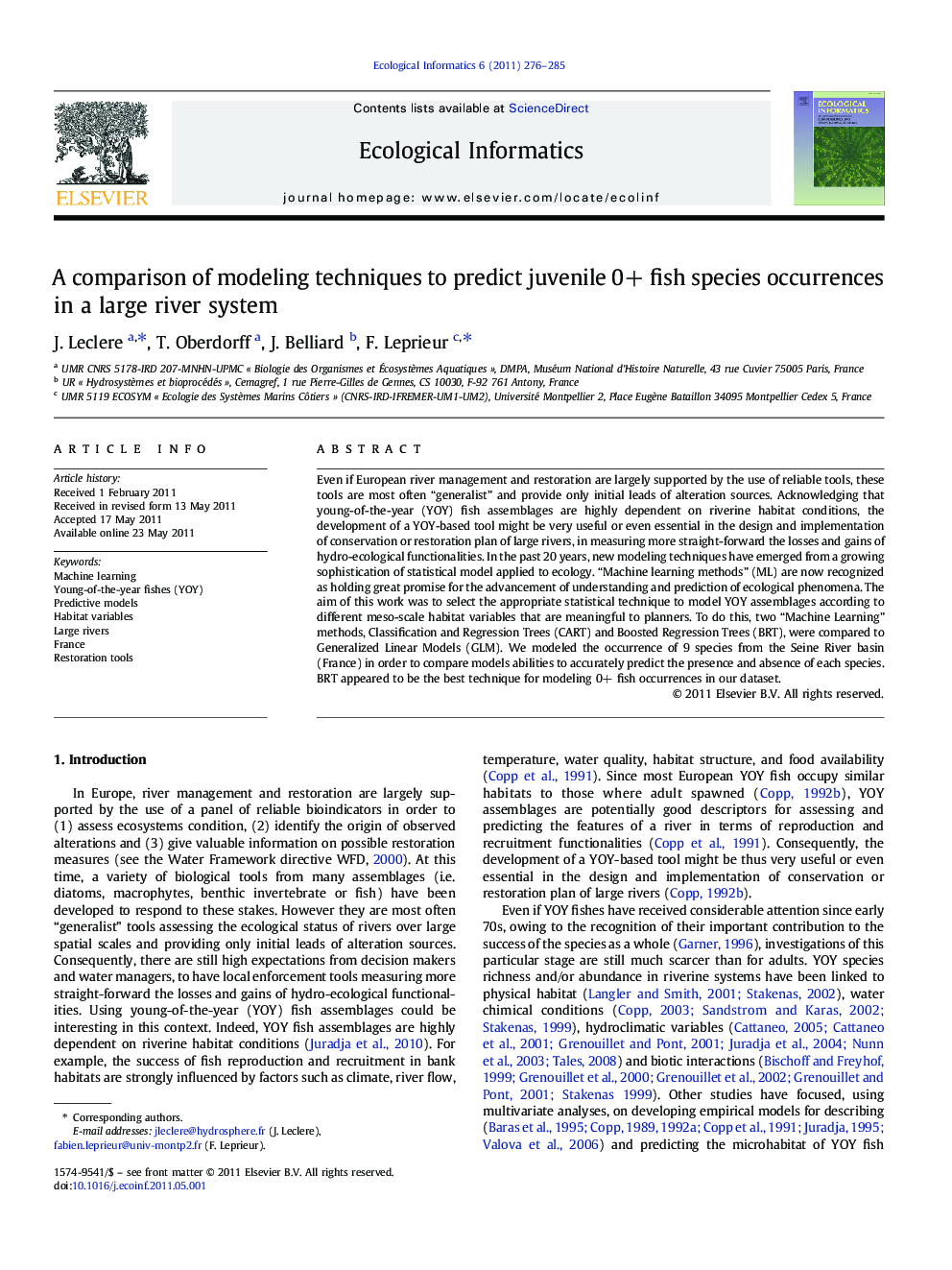| کد مقاله | کد نشریه | سال انتشار | مقاله انگلیسی | نسخه تمام متن |
|---|---|---|---|---|
| 4375133 | 1303244 | 2011 | 10 صفحه PDF | دانلود رایگان |

Even if European river management and restoration are largely supported by the use of reliable tools, these tools are most often “generalist” and provide only initial leads of alteration sources. Acknowledging that young-of-the-year (YOY) fish assemblages are highly dependent on riverine habitat conditions, the development of a YOY-based tool might be very useful or even essential in the design and implementation of conservation or restoration plan of large rivers, in measuring more straight-forward the losses and gains of hydro-ecological functionalities. In the past 20 years, new modeling techniques have emerged from a growing sophistication of statistical model applied to ecology. “Machine learning methods” (ML) are now recognized as holding great promise for the advancement of understanding and prediction of ecological phenomena. The aim of this work was to select the appropriate statistical technique to model YOY assemblages according to different meso-scale habitat variables that are meaningful to planners. To do this, two “Machine Learning” methods, Classification and Regression Trees (CART) and Boosted Regression Trees (BRT), were compared to Generalized Linear Models (GLM). We modeled the occurrence of 9 species from the Seine River basin (France) in order to compare models abilities to accurately predict the presence and absence of each species. BRT appeared to be the best technique for modeling 0+ fish occurrences in our dataset.
Research highlights
► Three modeling techniques were compared and tested to predict the occurrence of juvenile riverine fish species.
► Boosted Regressive Trees (BRT) appears as the most ecologically coherent and statistically accurate model.
► BRT selected a greater number of variables and more continuous variables.
► This method holds great promise for future ecological studies.
Journal: Ecological Informatics - Volume 6, Issue 5, September 2011, Pages 276–285